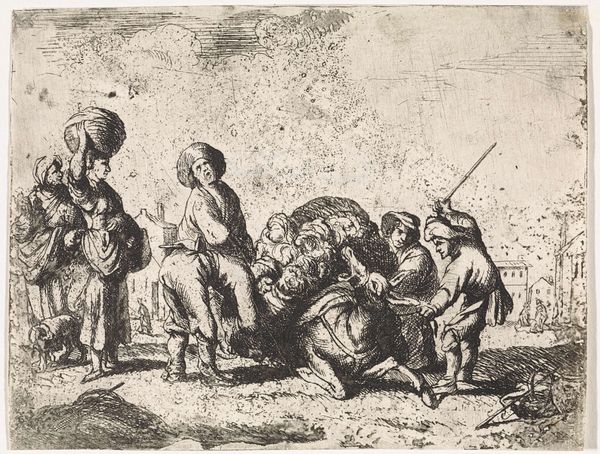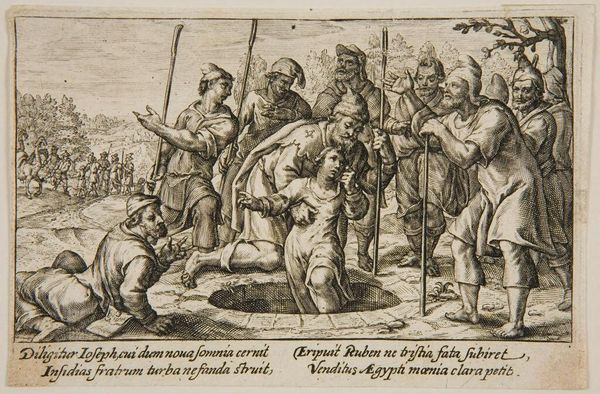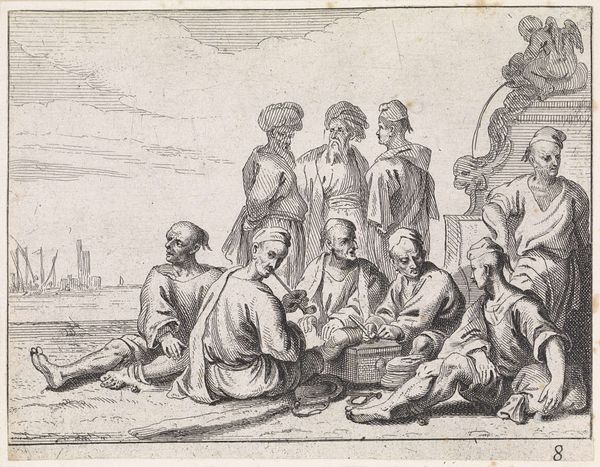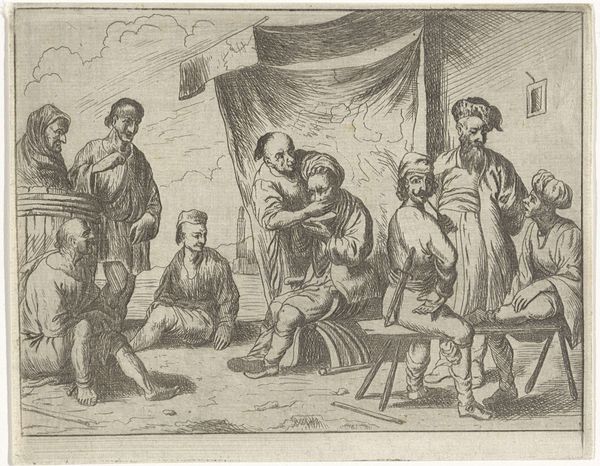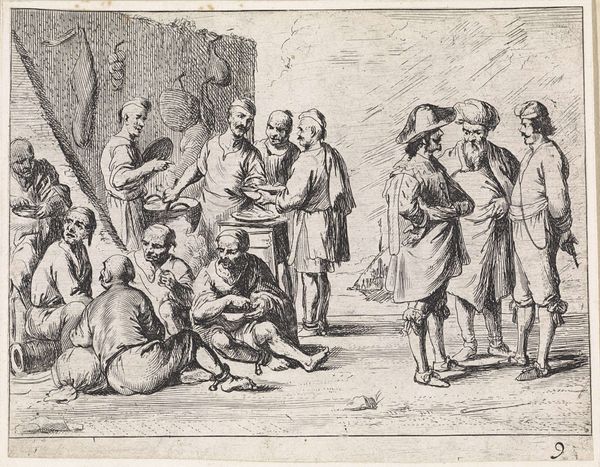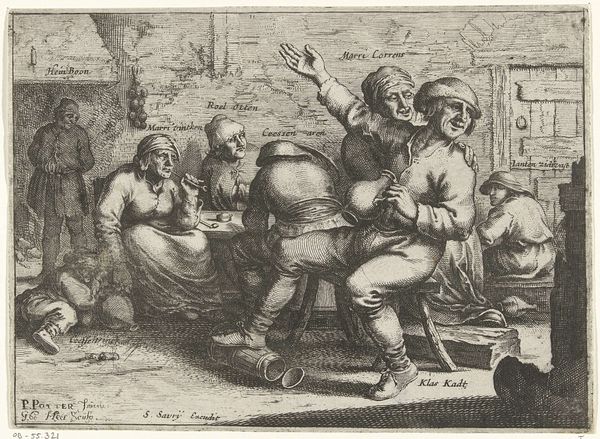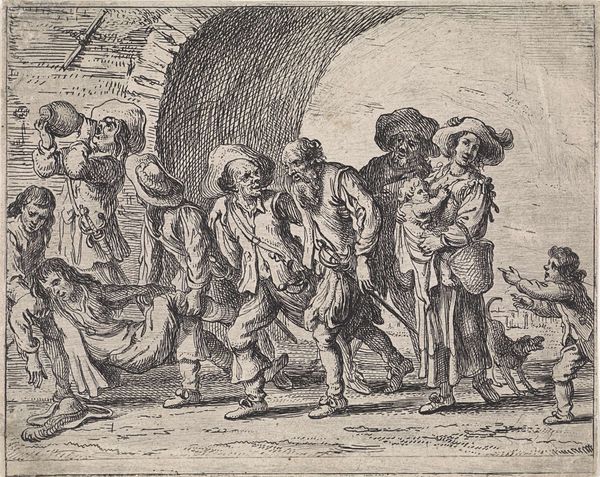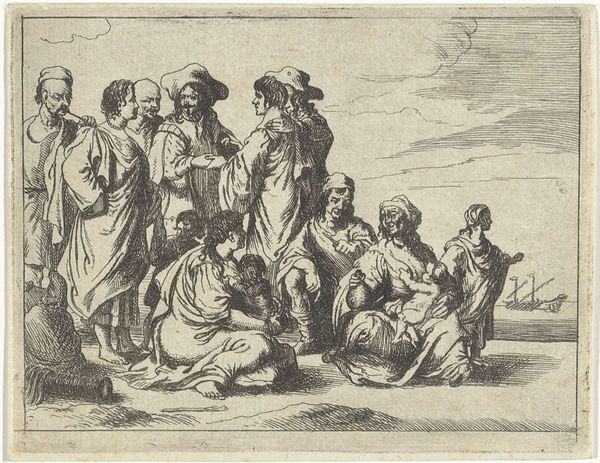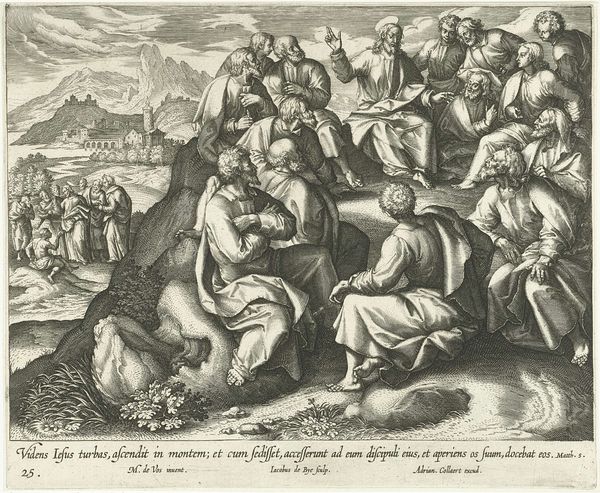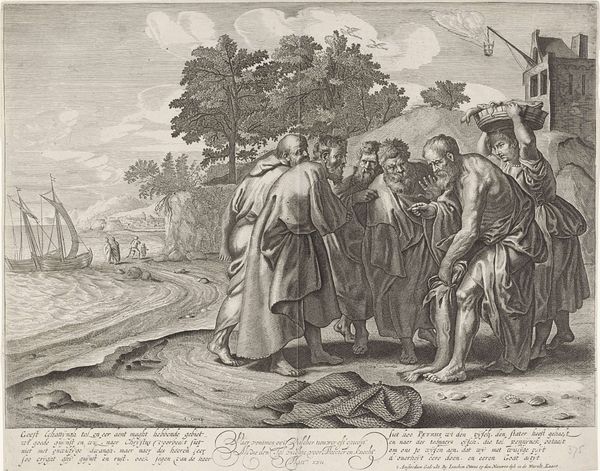
print, engraving
#
narrative-art
#
baroque
# print
#
genre-painting
#
engraving
#
realism
Dimensions: height 115 mm, width 150 mm
Copyright: Rijks Museum: Open Domain
Cornelis de Wael etched "The Braying Donkey" in the 17th century. Note the overloaded donkey at its center, a symbol laden with cultural memory. The animal, collapsing under excessive burden, echoes images of burdened figures throughout history, evoking a deep, subconscious understanding of suffering and exploitation. Consider, too, its presence in ancient fables, where the donkey often represents stubbornness and foolishness. Yet, it also bears the weight of labor and service. This duality in the donkey’s symbolism reveals how collective memory and cultural conditioning can influence our perception, creating layers of meaning embedded within the image. The braying is a primal cry, a form of protest. This humble animal, therefore, serves as a powerful force, engaging viewers on a deep, subconscious level and evoking intense emotional states. Its symbolic weight has resurfaced, evolved, and taken on new meanings across time.
Comments
No comments
Be the first to comment and join the conversation on the ultimate creative platform.
